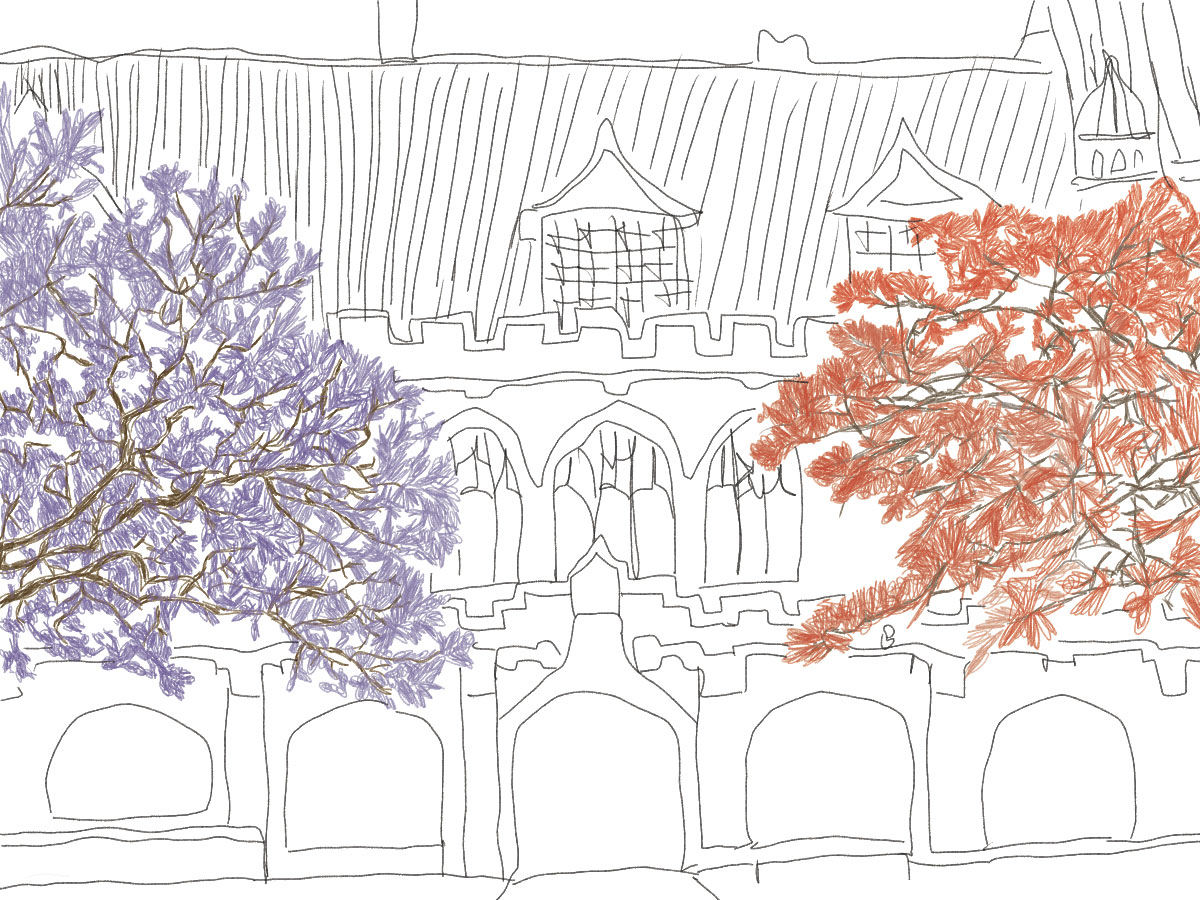On a late October night in 2016, the mighty Jacaranda homed in the Quadrangle met its demise. When news broke the next morning, tributes flooded in from students, staff and alumni, reminiscing about times spent under, near, or in front of the tree’s 18-metre-wide canopy.
Planted by Eben Gowrie (E.G.) Waterhouse, the Professor of German and Comparative Literature, in the late 1920s, ‘the’ Jacaranda was one of a number of trees to be planted in the Quad in an attempt by Waterhouse to beautify the Quad’s “wilderness.” Much to Waterhouse’s dismay however, in the tree’s early years, students continuously uprooted the tree. Waterhouse took to writing in several letters to Honi in 1937 calling the act “cowardly” and “despicable”. Eventually, the man secretly grew a Jacaranda and transplanted it onto University grounds once it “could not easily be manhandled”.
Despite these shaky beginnings, the Jacaranda eventually became a sight synonymous with the Quad and a marker of the passage of time. Through the decades, the tree became the root of an urban legend that stipulated students who had not started studying before its first purple bloom would fail their exams. So beloved was the tree that in 2014 two cuttings were taken and cloned in preparation for the tree’s eventual death.
The Jacaranda found in the Quad today is one of these clones, genetically identical to the one that preceded it. The purpose of this cloning fascinates me. Why did this new Jacaranda have to be genetically identical? What difference would it make, since the new sapling would grow differently anyway, shaped by a different set of conditions and circumstances?
Several other trees on campus are registered with the Jacaranda on the City of Sydney’s Significant Trees Register in recognition of their historic and environmental significance. These include the Moreton Bay Fig and Port Jackson Fig found in the eastern and northern forecourts of Fisher Library, the avenue of Port Jackson Figs along University Avenue leading up from Victoria Park, and the American Cottonwood found behind the Quadrangle. Yet according to the University, only the Jacaranda is maintained and grown in this way. Perhaps it is a matter of a specific legacy, or comfort, or remembrance. Perhaps it is simply because of its location, the centre of where power lies.
When the Jacaranda was replanted, a native flame tree was planted alongside it, in recognition of the Gadigal people’s custodianship of the lands on which the University was built. Both deciduous and flowering in late spring, they are companions in keeping silent watch on the happenings in the Quad. I wonder if the flame tree, too, will be cloned one day in the not-so-distant future or whether it already has been. And whether such symbolic roots will take to create tangible progress.





